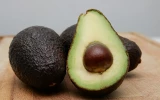How to Make an Avocado Tree Bear Fruit Faster
Avocado trees flourish in specific conditions that mimic their native environments, thriving in warm and mildly sunny climates. With the right know-how, you can accelerate the fruiting process of your avocado tree, turning your garden into a bountiful oasis. Let’s explore some ways you can encourage your avocado tree to bear fruit faster.
To make an avocado tree fruit faster,
- Use grafted trees
- Create a microclimate
- Apply growth regulators
- Solarize soil for pest control
- Use biostimulants and mycorrhizae for root health
- Plant pollinator-friendly flowers
- Hand pollinate in low bee areas
- Use drip irrigation for even watering
- Prune strategically
- Companion plant with nitrogen-rich legumes.
Avocado trees have 'A' and 'B' type flowers. Planting both types nearby can significantly increase the chances of pollination and fruit set. You can learn more about this below, and what you can do if natural pollination is not sufficient.
Optimizing fruiting speeds up when returns begin for those starting an avocado farm from scratch.
Summary
- Choose an avocado variety that matches your local climate, with 'Hass' being ideal for cooler regions.
- Plant in well-draining, slightly acidic soil and ensure the tree gets plenty of sunlight.
- Water deeply but infrequently, and use balanced fertilizer to promote healthy growth.
- Regular pruning is necessary to maintain tree health and structure.
- Plant both 'A' and 'B' type flower trees nearby to increase the chances of pollination and fruiting.
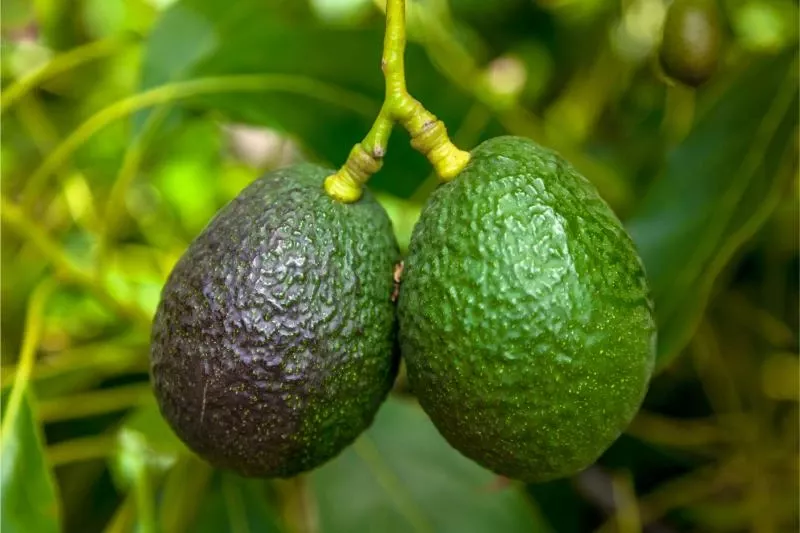
On this page:
- Selecting a Suitable Variety
- Optimizing Planting Conditions
- Fertilization and Nutrient Management
- Grafted Trees Over Seedlings
- Creating a Microclimate
- Use of Growth Regulators
- Soil Solarization
- Biostimulants and Mycorrhizae
- Intercropping with Pollinator-Friendly Plants
- Controlled Irrigation Systems
- Optimizing Pruning Techniques
- Companion Planting
Selecting a Suitable Variety
Since avocados are native to Central and South America, they do best in areas with mild temperatures and moderate humidity. Maintaining a climate similar to that o their original habitat will significantly affect how quickly and effectively it will bear fruit.
Avocado trees (Persea americana) are tropical plants with a preference for warm, humid climates, though they can adapt to a range of environments. They are divided into three main types: Mexican, Guatemalan, and West Indian, each with unique characteristics and climate preferences.
To ensure your avocado tree bears fruit swiftly, choosing the right variety is crucial. It can make a significant difference in the time it takes for fruiting to begin.
Mexican varieties like 'Hass' and 'Fuerte' are more cold-hardy and therefore better for colder areas, while West Indian types prefer warmer tropical climates. For faster fruiting, varieties like 'Hass' and 'Fuerte' are good choices as they fruit relatively quickly within 3-4 years and are widely popular for their taste and market demand.
Optimizing Planting Conditions
To ensure your avocado tree thrives and bears fruit quickly, it's crucial to optimize the planting conditions from the get-go.
They prefer well-draining, slightly acidic and nutrient-rich soil. Amending the soil with organic matter before planting creates ideal growing conditions.
Avocado trees need at least 6 hours of full sun daily, so choosing a sunny spot is key. Proper spacing is also important to avoid overcrowding and allow for adequate sunlight and airflow.
Young trees require more frequent watering, while mature trees do best with deep, less frequent watering to promote healthy growth. Ensuring good drainage is vital to prevent root rot from overwatering. Consistency in watering, adjusting based on rainfall and humidity, helps establish strong root systems for quicker fruiting.
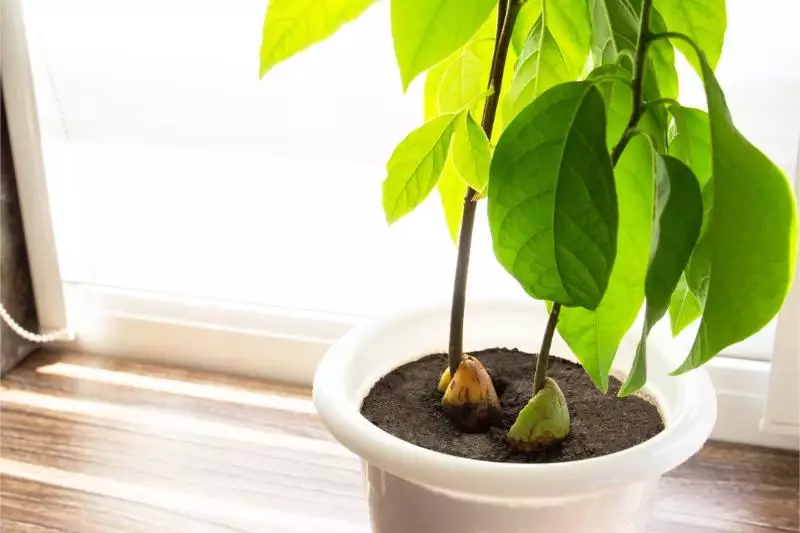
Fertilization and Nutrient Management
Young trees should be fertilized lightly but frequently, while mature trees benefit from more substantial feedings less often. Organic fertilizers like compost and well-rotted manure can be applied around the base of the tree to enrich the soil without risk of burning.
Avocado trees need a balanced mix of nutrients including nitrogen, phosphorus, potassium as well as micronutrients. Signs of deficiencies may include yellowing leaves or poor fruit quality, so a balanced fertilizer or supplement can help avoid issues.
Conducting a soil test ensures the soil has the proper pH and fertility levels to encourage strong root growth.
Grafted Trees Over Seedlings
Grafting involves attaching a mature avocado branch (scion) to a young rootstock. This process significantly reduces the time to bear fruit compared to growing from seed. Grafted trees can produce fruit in as little as 3-4 years, while seed-grown trees might take 7-15 years.
Grafting is an effective horticultural technique that can accelerate the fruit-bearing process of avocado trees. By joining a mature scion from a fruiting tree with a healthy rootstock, you encourage earlier fruit production compared to seed-grown trees.
Grafting techniques
- Cleft grafting: This common technique involves making a vertical cut in the rootstock and inserting a wedge-shaped scion into the split.
- Bark grafting: Use when the rootstock is significantly thicker than the scion; the scion is inserted under the bark of the rootstock.
- Side-veneer grafting: A small, diagonal cut is made in the rootstock and a matching scion is placed against this cut surface.
Scion selection
- Select mature scions: Choose scions from a known healthy and productive avocado tree for better success rates.
- Healthy buds: Make sure the scion has multiple buds, indicating it's healthy and capable of active growth.
Rootstock choices
- Disease resistance: Pick rootstock known for resistance to common avocado tree diseases like root rot.
- Climate adaptability: Ensure your rootstock choice is suited to your local climate for optimal growth and fruiting.
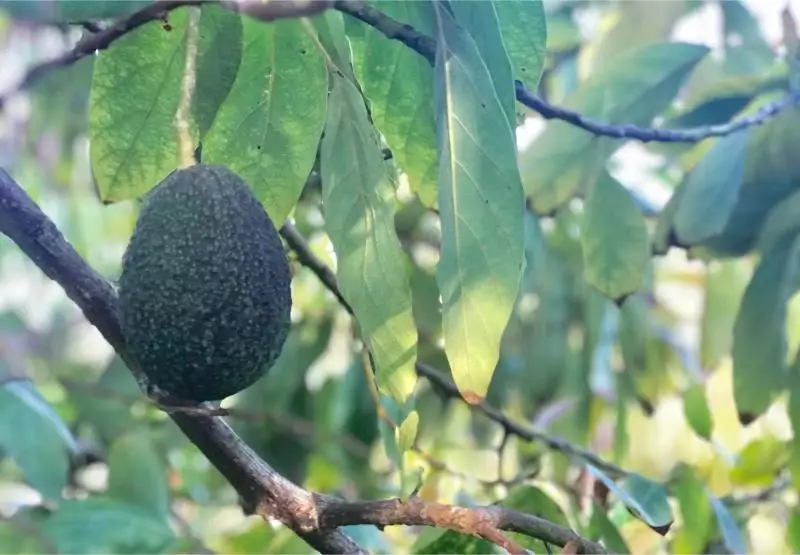
Creating a Microclimate
If you're in a less-than-ideal climate for avocados, you can create a microclimate to mimic their preferred conditions. This includes using windbreaks, reflective walls to increase heat, or shade cloths to moderate intense sun.
To accelerate fruit production, it's essential to manage environmental stresses effectively. These include protecting your avocado tree from extreme weather conditions like frost and intense heat, as well as implementing windbreaks to shield against strong winds.
Protecting from frost
Frost can severely damage or even kill young avocado trees. Here's how you can guard them:
- Location: Plant your tree on the south side of a building if possible, to take advantage of radiant heat.
- Covering: Use burlap or frost cloths to cover your tree when frost is forecasted.
Windbreak installation
Strong winds can break branches and stress your avocado tree, hindering fruit production. To mitigate this:
- Plant a windbreak: Place a row of trees or shrubs on the windward side to buffer strong gusts.
- Artificial barriers: Erect fences or nets as an alternative to natural windbreaks.
Heat tolerance
Avocados prefer moderate temperatures. To help them cope with heat:
- Shade cloth: Install a shade cloth overhead during the hottest part of the day.
- Mulching: Apply a thick layer of mulch around the base to help retain soil moisture.
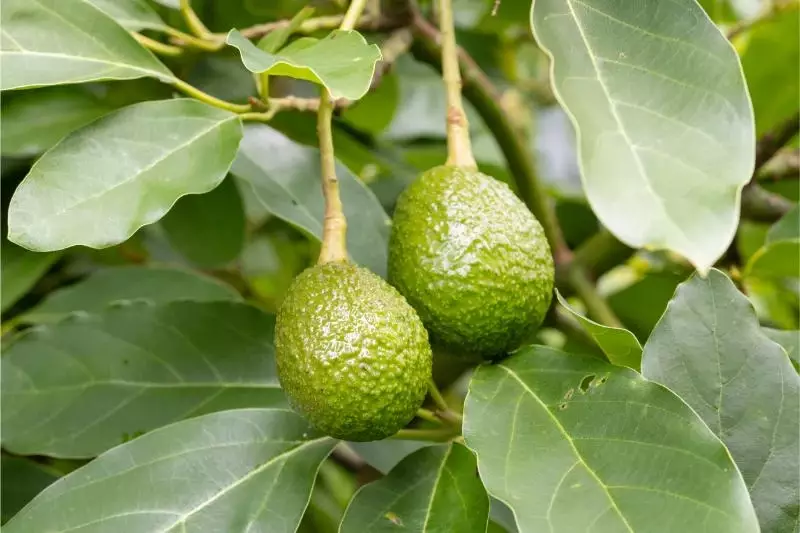
Use of Growth Regulators
Applying plant hormones like gibberellins can encourage flowering and fruit set. However, it's crucial to use these carefully, as they can also stimulate excessive vegetative growth.
When nurturing your avocado tree, understanding the role of growth regulators can be quite helpful. These substances, akin to hormones, manage various aspects of the tree's development and fruiting process.
Gibberellins, for instance, are known to promote growth and may increase fruit size when applied correctly. You should use these sparingly, as they can also lead to excessive vegetative growth at the expense of fruit production.
Ethylene is another growth regulator, which encourages fruit ripening. For avocados, ethylene application can be tricky, as it can hasten ripening but may negatively impact the storage life of the fruit.
Here are a few tips for using growth regulators:
- Apply gibberellins during the flowering stage to boost fruit set.
- Use ethylene to synchronize and expedite fruit ripening close to the harvest time.
- Avoid overuse to prevent harmful effects on fruit quality or tree health.
| Growth Regulator | Stage of Application | Expected Outcome |
|---|---|---|
| Gibberellins | Flowering | Increased fruit set |
| Ethylene | Pre-harvest | Uniform ripening |
These applications should always follow product guidelines and your local agricultural regulations. Proper use of growth regulators can help your avocado tree bear fruit faster, but they are just one component of overall care that includes proper watering, fertilization, and sunlight exposure. Also, organic options may be available if you prefer a natural approach to hasten fruit production.
Soil Solarization
Before planting, use solarization to heat the soil and eliminate pests or pathogens. This involves covering the soil with a transparent plastic sheet during hot weather, creating a greenhouse effect that heats the soil to high temperatures.

Biostimulants and Mycorrhizae
Applying biostimulants like seaweed extracts or fish emulsions can enhance root development and stress tolerance. Introducing mycorrhizal fungi to the root system improves nutrient and water uptake, promoting overall tree health and potentially earlier fruiting.
Intercropping with Pollinator-Friendly Plants
Planting flowers and herbs that attract pollinators like bees and butterflies can improve the pollination of avocado trees, leading to better fruit set.
Understanding flower types
Avocado trees exhibit a unique flowering behavior known as "type A and B flowering." Type A varieties open their female flowers in the morning of the first day and male flowers in the afternoon of the second day. Conversely, Type B varieties open their female flowers in the afternoon of the first day and male flowers the following morning. This synchronicity increases the chances of cross-pollination when you have both tree types planted near each other.
Bee attraction strategies
To naturally enhance pollination:
- Plant diverse flowering plants nearby to attract bees year-round.
- Ensure sufficient water sources for bees, such as a shallow birdbath with stones for them to land on.
- Avoid the use of pesticides, which can harm these vital pollinators. By creating a bee-friendly environment, you will increase the likelihood of bees visiting and pollinating your avocado blossoms.
Hand pollination
In areas with low bee activity, manually transfer pollen from one flower to another. If natural pollination is not sufficient, you can hand-pollinate:
- Collect pollen from a flowering tree with a small paintbrush or cotton swab.
- Transfer the pollen gently to the stigma of flowers on the same or a different avocado tree.
Hand pollination should be done during the appropriate flowering time for type A or B flowers. This method can be particularly useful in areas with low bee populations or during poor weather conditions when bees are less active.
Controlled Irrigation Systems
Implementing a drip irrigation system can provide consistent and optimal water levels, which is crucial for healthy growth and early fruiting.
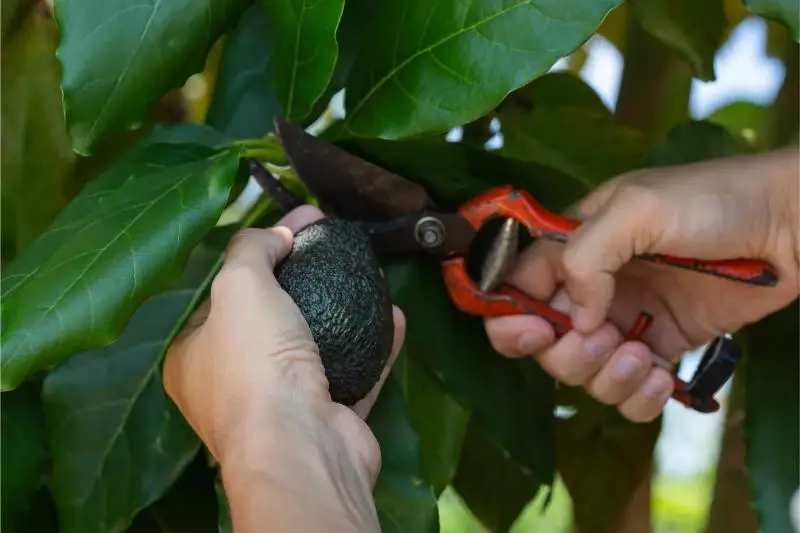
To expedite fruit production in avocado trees, combine grafting techniques with proper care and maintenance, while adhering to recommended spacing for avocado trees for optimal growth and fruit yield.
Optimizing Pruning Techniques
Strategic pruning can stimulate growth in the desired areas of the tree and improve sunlight penetration, which can encourage earlier fruiting. Pruning is essential for removing dead or diseased wood and encouraging growth. However, be cautious as excessive pruning can delay fruiting.
Train young trees to develop a strong, open canopy, which aids in sunlight penetration and air circulation.
When to prune
Pruning should be done carefully to balance growth and fruit production. It's best to prune your avocado tree early in the spring before new growth begins. This allows you to shape the tree without inhibiting the growth of new fruiting wood.
Techniques for pruning
- Thinning: Remove excess branches to permit light and air to reach the inner parts of the tree, enhancing tree health and fruit quality.
- Cutting back: Trim the tips of branches to encourage lateral growth rather than height.
- Corrective measures: If you notice any diseased or damaged branches, remove them as soon as possible to prevent further issues.
Pest and disease control
Use organic pesticides and fungicides when necessary, and encourage natural predators like ladybugs.
Maintain vigilance for signs of pests and diseases. Regularly inspect the leaves, branches, and fruit for abnormalities. If you do find evidence of pests or disease:
- Identify the problem accurately, as each will require a different approach.
- Treat with appropriate organic or chemical treatments, following all recommended safety measures.
For example, nutritional plant sprays can supply essential minerals like zinc, boron, and manganese, which can keep your tree robust and more resistant to pests.
Companion Planting
Planting certain plants nearby, like legumes, can naturally increase nitrogen in the soil, a key nutrient for avocado trees.

